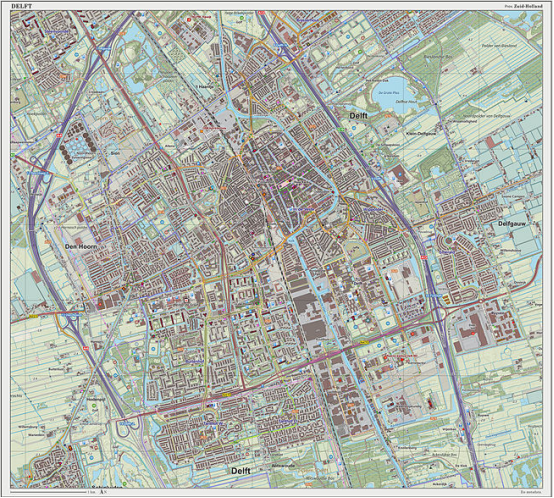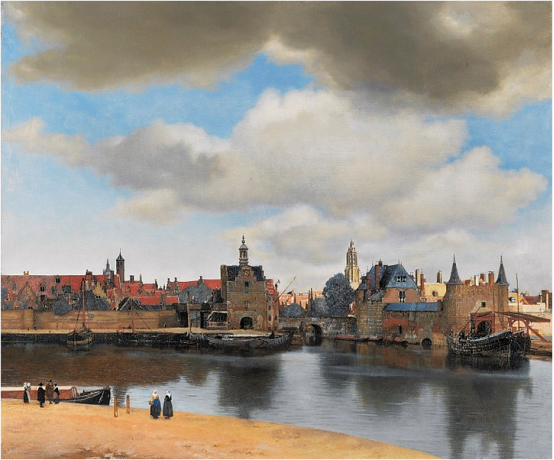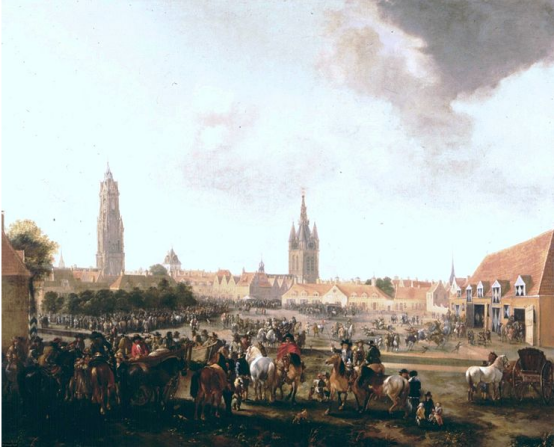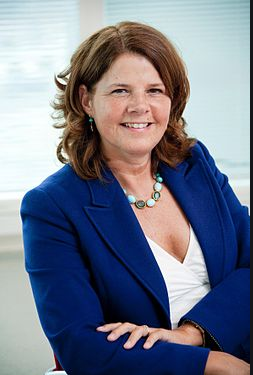Delft 作者: 来源: 发布时间:2021-04-23
一、所属省或是州,具体位置,人口,面积
Location in South Holland
Coordinates: 52°0′42.25″N 4°21′33.15″E
Country Netherlands
Province South Holland
City Hall Delft City Hall
Government
• Body Municipal council
• Mayor Marja van Bijsterveldt (CDA)
Area
• Total 24.06 km2 (9.29 sq mi)
• Land 22.82 km2 (8.81 sq mi)
• Water 1.24 km2 (0.48 sq mi)
Elevation 0 m (0 ft)
Population (January 2019)[4]
• Total 103,163
• Density 4,521/km2 (11,710/sq mi)
Time zone UTC+1 (CET)
• Summer (DST) UTC+2 (CEST)
Postcodes
2600–2629
Area code 015
Delft (Dutch pronunciation: [dɛlft] (About this soundlisten)) is a city and municipality in the province of South Holland, Netherlands. It is located between Rotterdam, to the southeast, and The Hague, to the northwest. Together with them, it is part of both Rotterdam–The Hague metropolitan area and the Randstad.
Delft is a popular tourist destination in the country of The Netherlands. It is home to Delft University of Technology (TU Delft), regarded as center of technological research and development in the Netherlands, Delft Blue pottery and the currently reigning House of Orange-Nassau. Historically, Delft played a highly influential role in the Dutch Golden Age. Delft has a special place in the history of microbiology. In terms of science and technology, thanks to the pioneering contributions of Antonie van Leeuwenhoek and Martinus Beijerinck, Delft can be considered to be the true birthplace of microbiology, with its several sub-disciplines such as bacteriology, protozoology, and virology.

二、自然地理(地理环境、自然资源,交通情况)
Nature and recreation
East of Delft lies a relatively large nature and recreation area called the "Delftse Hout" ("Delft Wood"). Through the forest lie bike, horse-riding and footpaths. It also includes a vast lake (suitable for swimming and windsurfing), narrow beaches, a restaurant, and community gardens, plus camping ground and other recreational and sports facilities. (There is also a facility for renting bikes from the station.)
Inside the city, apart from a central park, there are several smaller town parks, including "Nieuwe Plantage", "Agnetapark", "Kalverbos". There is also the Botanical Garden of the TU and an arboretum in Delftse Hout.
Transport
Delft railway station; (As of February 2015, located in a new building.)
Delft Campus railway station
Trains stopping at these stations connect Delft with, among others, the nearby cities of Rotterdam and The Hague, as often as every five minutes, for most of the day.
There are several bus routes from Delft to similar destinations. Trams frequently travel between Delft and The Hague via special double tracks crossing the city.

Topographic map of Delft city (in Dutch), September 2014.
三、经济发展和规模
In the local economic field essential elements are:
education; (amongst others Delft University of Technology) (As of 2017 21.651 students and 4.939 full-time employees),
scientific research; (amongst others "TNO" Netherlands Organisation for Applied Scientific Research), Stichting Deltares, Nederlands Normalisatie-Instituut, UNESCO-IHE Institute for water education, Technopolis Innovation Park;
tourism; (about one million registered visitors a year),
industry; (DSM Gist Services BV, (Delftware) earthenware production by De Koninklijke Porceleyne Fles, Exact Software Nederland BV, TOPdesk, Ampelmann)
retail; (IKEA (Inter IKEA Systems B.V., owner and worldwide franchisor of the IKEA Concept, is based in Delft), Makro, Eneco Energy NV).
四、产业特点/重点项目
Exact (company)
Type Besloten vennootschap
Industry Information technology, software
Founded 1984
Headquarters Delft, Netherlands
Key people
Phill Robinson (CEO) Eduard Hagens (Founder)
Products
Exact Online
Exact Globe
Exact Synergy
Exact Financials
Revenue € 209 million (2018)
Number of employees
1432 (2018)
Exact is a Dutch software company that offers accounting, ERP, and other software for small and medium enterprises. Exact develops cloud-based and on-premises software for industries such as accountancy, wholesale distribution, professional services and manufacturing, serving more than 400,000 companies.
Exact, founded in 1984, has its headquarters in Delft. It has subsidiaries and offices in Europe, North America and Asia. The company was listed on Euronext until March 2015, when it was bought up by a group of investors led by Apax[2] and in 2019 by investor KKR.
五、风景名胜,景点
The city centre retains a large number of monumental buildings, while in many streets there are canals of which the banks are connected by typical bridges, altogether making this city a notable tourist destination.
Historical buildings and other sights of interest include:
Oude Kerk (Old Church). Buried here: Piet Hein, Johannes Vermeer, Anthony van Leeuwenhoek.
Nieuwe Kerk (New Church), constructed between 1381 and 1496. It contains the Dutch royal family's burial vault which, between funerals, is sealed with a 5,000 kg (11,023 lb) cover stone.
A statue of Hugo Grotius created by Franciscus Leonardus Stracké in 1886, located on the Markt near the Nieuwe Kerk.
The Prinsenhof (Princes' Court), now a museum.
City Hall on the Markt.
The Oostpoort (Eastern gate), built around 1400. This is the only remaining gate of the old city walls.
The Gemeenlandshuis Delfland, or Huyterhuis, built in 1505, which has housed the Delfland regional water authority since 1645.
The Vermeer Centre in the re-built Guild house of St. Luke.
The historical "Waag" building (Weigh house).
Windmill De Roos, a tower mill built c.1760. Restored to working order in 2013. Another windmill that formerly stood in Delft, Het Fortuyn, was dismantled in 1917 and re-erected at the Netherlands Open Air Museum, Arnhem, Gelderland in 1920.
Royal Delft also known as De Porceleyne Fles, is a great place which showcases Delft ware.
Science Center attracts kids as well as adults.

View of Delft by Johannes Vermeer, 1660–1661

View of the horse market in Delft by Pieter Wouwerman, 1665

Delft City Hall
六、历史文化
Early history
The city of Delft came into being beside a canal, the 'Delf', which comes from the word delven, meaning to delve or dig, and this led to the name Delft. At the elevated place where this 'Delf' crossed the creek wall of the silted up river Gantel, a Count established his manor, probably around 1075. Partly because of this, Delft became an important market town, the evidence for which can be seen in the size of its central market square.
Having been a rural village in the early Middle Ages, Delft developed into a city, and on 15 April 1246, Count Willem II granted Delft its city charter. Trade and industry flourished. In 1389 the Delfshavensche Schie canal was dug through to the river Maas, where the port of Delfshaven was built, connecting Delft to the sea.
Until the 17th century, Delft was one of the major cities of the then county (and later province) of Holland. In 1400, for example, the city had 6,500 inhabitants, making it the third largest city after Dordrecht (8,000) and Haarlem (7,000). In 1560, Amsterdam, with 28,000 inhabitants, had become the largest city, followed by Delft, Leiden and Haarlem, which each had around 14,000 inhabitants.
In 1536, a large part of the city was destroyed by the great fire of Delft.
The town's association with the House of Orange started when William of Orange (Willem van Oranje), nicknamed William the Silent (Willem de Zwijger), took up residence in 1572 in the former Saint-Agatha convent (subsequently called the Prinsenhof). At the time he was the leader of growing national Dutch resistance against Spanish occupation, known as the Eighty Years' War. By then Delft was one of the leading cities of Holland and it was equipped with the necessary city walls to serve as a headquarters. In October, 1573, an attack by Spanish forces was repelled in the Battle of Delft.
After the Act of Abjuration was proclaimed in 1581, Delft became the de facto capital of the newly independent Netherlands, as the seat of the Prince of Orange.
When William was shot dead on July 10, 1584 by Balthazar Gerards in the hall of the Prinsenhof (now the Prinsenhof Museum), the family's traditional burial place in Breda was still in the hands of the Spanish. Therefore, he was buried in the Delft Nieuwe Kerk (New Church), starting a tradition for the House of Orange that has continued to the present day.
Around this time, Delft also occupied a prominent position in the field of printing.
A number of Italian glazed earthenware makers settled in the city and introduced a new style. The tapestry industry also flourished when famous manufacturer François Spierincx moved to the city. In the 17th century, Delft experienced a new heyday, thanks to the presence of an office of the Dutch East India Company (VOC) (opened in 1602) and the manufacture of Delft Blue china.
A number of notable artists based themselves in the city, including Leonard Bramer, Carel Fabritius, Pieter de Hoogh, Gerard Houckgeest, Emanuel de Witte, Jan Steen, and Johannes Vermeer. Reinier de Graaf and Antonie van Leeuwenhoek received international attention for their scientific research.
Delft Explosion
The Delft Explosion, also known in history as the Delft Thunderclap, occurred on 12 October 1654 when a gunpowder store exploded, destroying much of the city. Over a hundred people were killed and thousands were injured.
About 30 tonnes (29.5 long tons; 33.1 short tons) of gunpowder were stored in barrels in a magazine in a former Clarist convent in the Doelenkwartier district, where the Paardenmarkt is now located. Cornelis Soetens, the keeper of the magazine, opened the store to check a sample of the powder and a huge explosion followed. Luckily, many citizens were away, visiting a market in Schiedam or a fair in The Hague.
Today, the explosion is primarily remembered for killing Rembrandt's most promising pupil, Carel Fabritius, and destroying almost all of his works.
Delft artist Egbert van der Poel painted several pictures of Delft showing the devastation.
The gunpowder store was subsequently re-housed, a 'cannonball's distance away', outside the city, in a new building designed by architect Pieter Post.
Culture
Delft is well known for the Delft pottery ceramic products which were styled on the imported Chinese porcelain of the 17th century. The city had an early start in this area since it was a home port of the Dutch East India Company. It can still be seen at the pottery factories De Koninklijke Porceleyne Fles (or Royal Delft) and De Delftse Pauw, while new ceramics and ceramic art can be found at the Gallery Terra Delft.
The painter Johannes Vermeer (1632–1675) was born in Delft. Vermeer used Delft streets and home interiors as the subject or background in his paintings.[14] Several other famous painters lived and worked in Delft at that time, such as Pieter de Hoogh, Carel Fabritius, Nicolaes Maes, Gerard Houckgeest and Hendrick Cornelisz. van Vliet. They were all members of the Delft School. The Delft School is known for its images of domestic life and views of households, church interiors, courtyards, squares and the streets of Delft. The painters also produced pictures showing historic events, flowers, portraits for patrons and the court as well as decorative pieces of art.
Delft supports creative arts companies. From 2001 the Bacinol , a building that had been disused since 1951, began to house small companies in the creative arts sector. However, demolition of the building started in December 2009, making way for the construction of the new railway tunnel in Delft. The occupants of the building, as well as the name 'Bacinol', moved to another building in the city. The name Bacinol relates to Dutch penicillin research during WWII.

Delft blue is most famous but there are other kinds of Delftware, like this plate faience in rose
七、其他信息
Nuna is a series of manned solar-powered vehicles, built by students at the Delft University of Technology, that won the World solar challenge in Australia seven times in the last nine competitions (in 2001, 2003, 2005, 2007, 2013, 2015 and 2017).
The so-called "Superbus" project aims to develop high-speed coaches capable of speeds of up to 250 kilometres per hour (155 mph) together with the supporting infrastructure including special highway lanes constructed separately next to the nation's highways; this project was led by Dutch astronaut professor Wubbo Ockels of the Delft University of Technology.
Members of both Delft Student Rowing Clubs Proteus-Eretes and Laga have won many international trophies, including Olympic medals, in the past.
The Human Power Team Delft & Amsterdam, a team consisting mainly of students from the Delft University of Technology, has won The World Human Powered Speed Challenge (WHPSC) four times. This is an international contest for recumbents in the US state of Nevada, the aim of which is to break speed records. They set the world record of 133.78 kilometres an hour (83.13 mph) in 2013.
八、联系方式

Mayor Marja van Bijsterveldt (CDA)
Assumed office
2 September 2016
Preceded by Bas Verkerk
Born Janneke Marlene Vliegenthart
27 June 1961 (age 58)
Rotterdam, Netherlands
Nationality Dutch
Political party Christian Democratic Appeal
Contact
Phone: 14015
From abroad: 0031 15 260 22 22
WhatsApp: 06 52 73 94 76
Facebook:
Gemeente Delft
@gemeentedelft
Twitter: Gemeente Delft
@GemeenteDelft
Yutube:
Gemeente Delft
Visitor address: Stationsplein 1
(navigation: follow Coenderstraat)
Mailing address: Postbus 78, 2600 ME, Delft
Website www.delft.nl
